Parque Colón / Columbus Park
Parque Colón, named after the Admiral Cristobal Colón, is one of the most popular parks in the Colonial Zone. The plaza is surrounded by historical buildings and restaurants. With its large trees and shaded benches, it is the perfect spot to sit, relax and watch people.
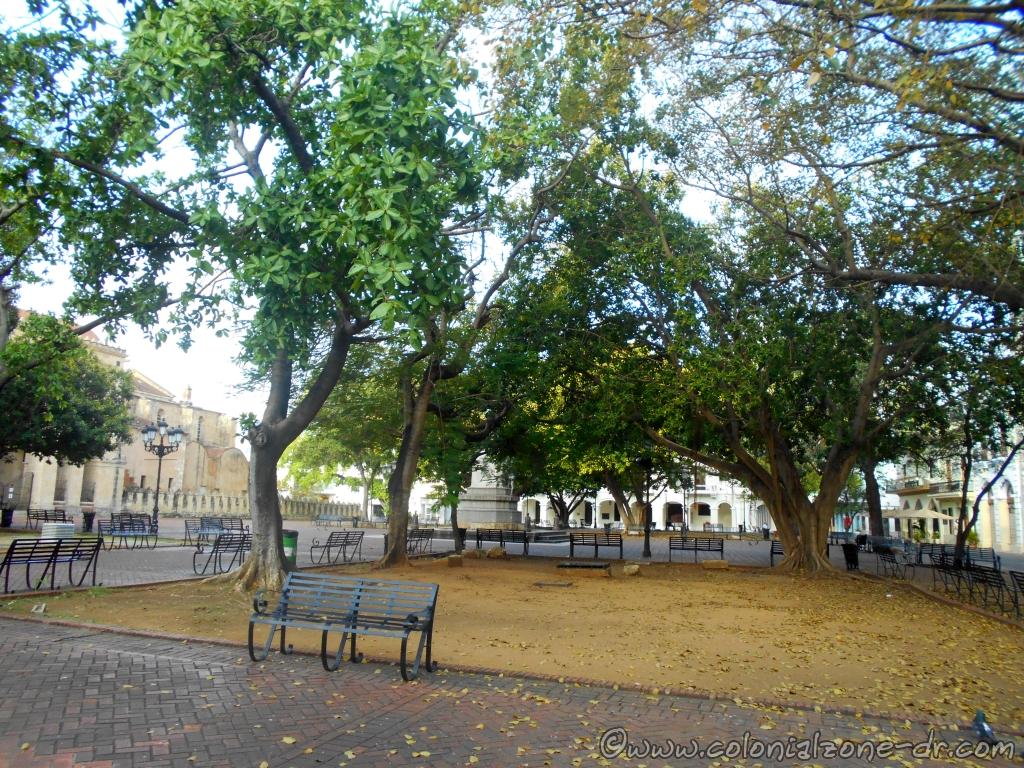
About Parque Colón | History | Interesting Facts | Location
About Parque Colón
Columbus Park is a large bricked park or plaza about 298 x 200 feet / 90 x 60 meters in size. It is located on the side of the Cathedral of Santo Domingo. The beautiful large trees with cozy park benches make it feel like a little oasis in a big city.
The Plaza is surrounded by 3 streets, the pedestrian-only Calle el Conde, Isabel la Católica and Arzobispo Meriño. Some of the historical buildings surrounding the park include the Palacio Consistorial, The Palacio de Borgellá, and the First Cathedral in the Americas, The Catedral de Santo Domingo.
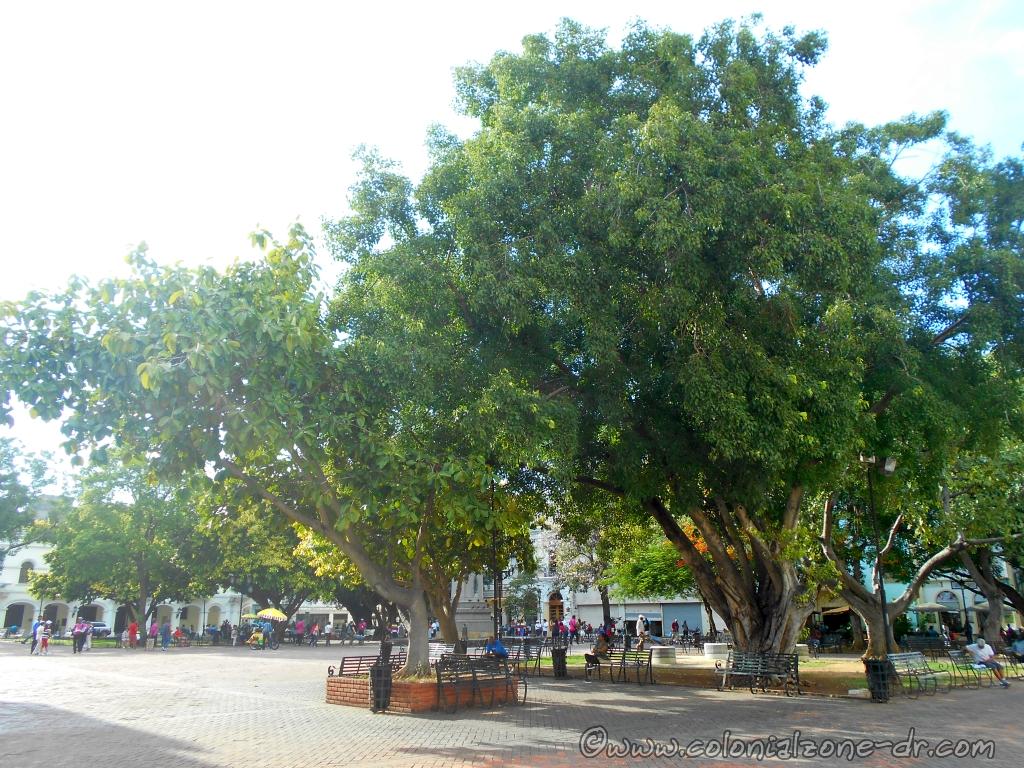
The park is a hangout for tourists and locals alike. You will see people snapping pictures, feeding the large flocks of pigeons, children playing with their parents looking on, lovers holding hands, people just sitting relaxing (maybe even taking a snooze) while enjoying the gentle breezes and the shade getting relief from the hot Dominican sun.
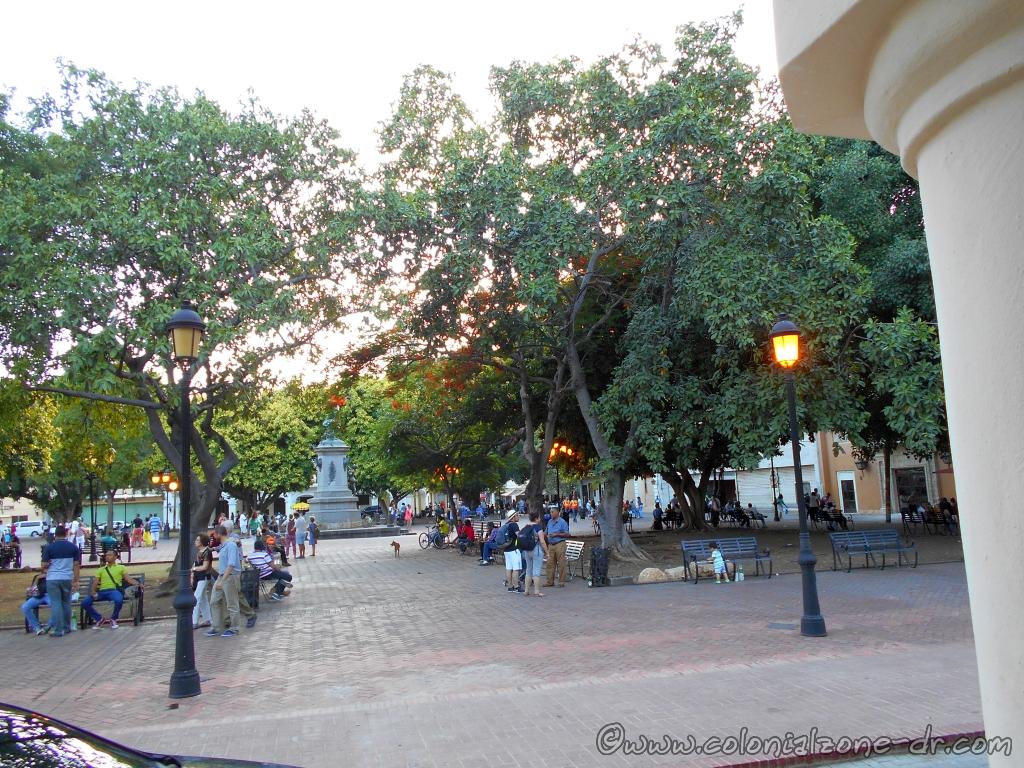
Because Parque Colón is a high traffic tourist area, there will be many vendors trying to sell you many different types of items. Maybe a CD of typical Dominican music, a rosary or some other trinket. There is normally a Marchanta selling snacks. There are always tour guides looking for guidees at a price. Taxi drivers will ask if you need a taxi as you pass by their stands. Maybe a shoeshine boy (limpia bota) will ask if you need a shine or give you a little flower and then ask you to pay for it. A local street dog could follow you, they can spot a tourist from a distance.
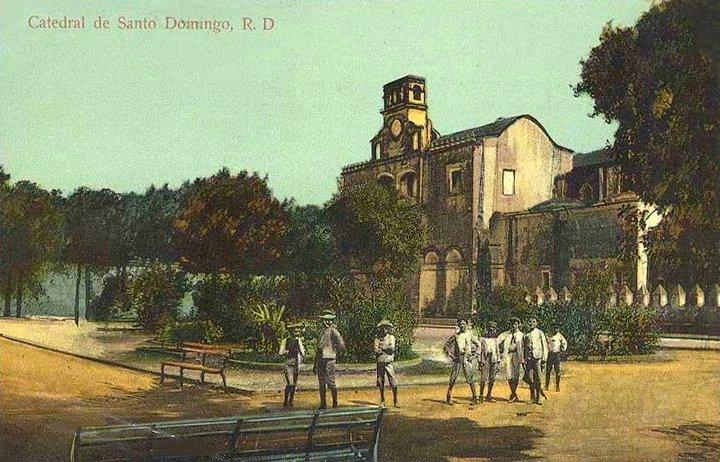
History
It is said that the location of this plaza originally was an important place for the native peoples, the Tainos, to gather. But that all changed when the Europeans showed up and “discovered” Hispaniola.
Originally the square reached from Calle Real (now called Calle El Conde), Calle de la Universidad (now Calle Padre Billini), Calle del Arzobispo (now Arzobispo Portes) and Calle de Santa Clara (now Isabel la Católica).
In 1514 they decided to place the Cathedral in more than half of the park. This included the Plazoleta de Los Curas, the Plazoleta Padre Billini, and the houses that faced Calle Padre Billini. In 1521 Bishop Alejandro Geraldini started building the Cathedral.
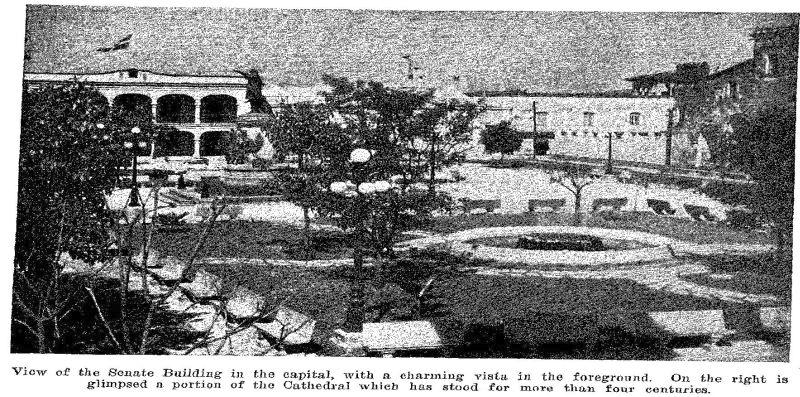
They made the original Plaza of earth and there were no trees. There was a water fountain in the center with water that was supplied from the original aqueducts of the city. The first tree was planted in the Plaza during the Haitian invasion in 1822. It was a palm called de la Libertad. After the country was free of Haitian rule, the plaza was improved and more trees were added.
The square was known as Plaza Mayor, named by Nicolás de Ovando in 1506. This plaza was also named Plaza de Armas. When the first Cathedral was completed in 1523 the name was again changed to Plaza de la Catedral. They installed the statue of the Grand Admiral Cristobal Colón, a creation of the French sculptor Ernest Gilbert unveiled on February 27, 1887, the plaza was baptized with the name of Parque Colón.
The plaza which was originally a grassy plot was eventually paved and benches and lanterns were added making it into the park we know and love today.
Reference:
https://repositorio.unphu.edu.do/bitstream/handle/123456789/2358/La%20plaza%20mayor%20de%20la%20ciudad%20colonial%20de%20Santo%20Domingo.pdf?sequence=1&isAllowed=y
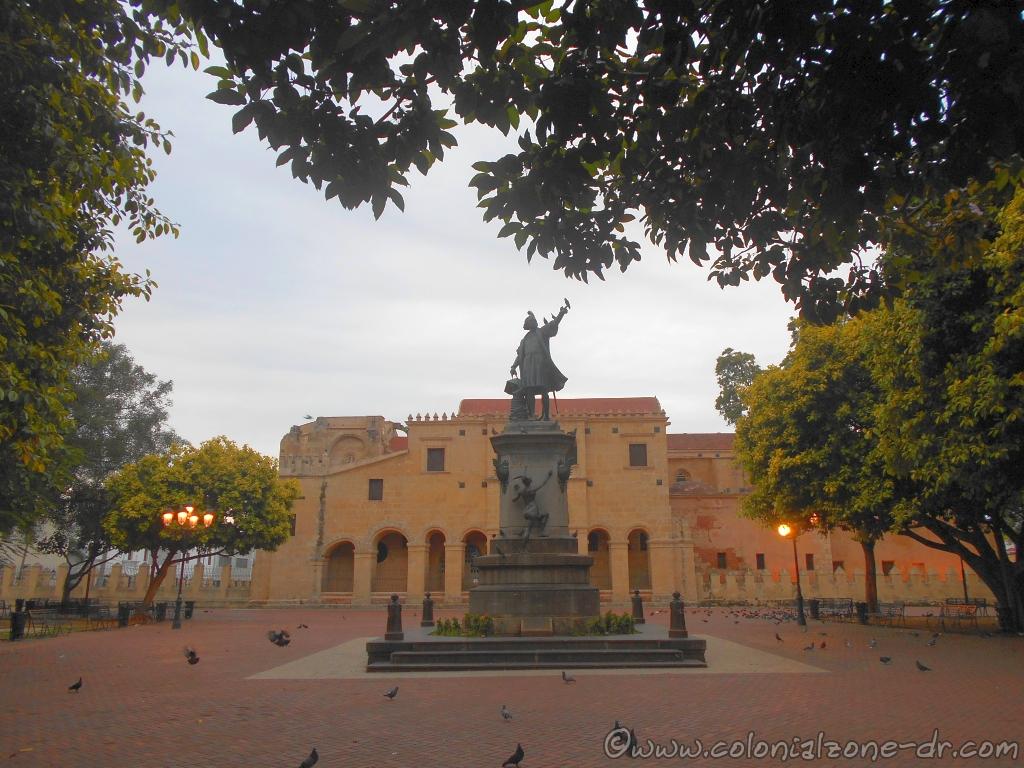
Interesting Facts:
*Parque Colón was voted one of the best in all the world…more info (https://www.colonialzone-dr.com/useless-trivia/#public-place).
*The first electric lights in the city of Santo Domingo were turned on in Parque Colón on February 27, 1896.
*At one time there were working fountains on both sides of the park which have been filled in.
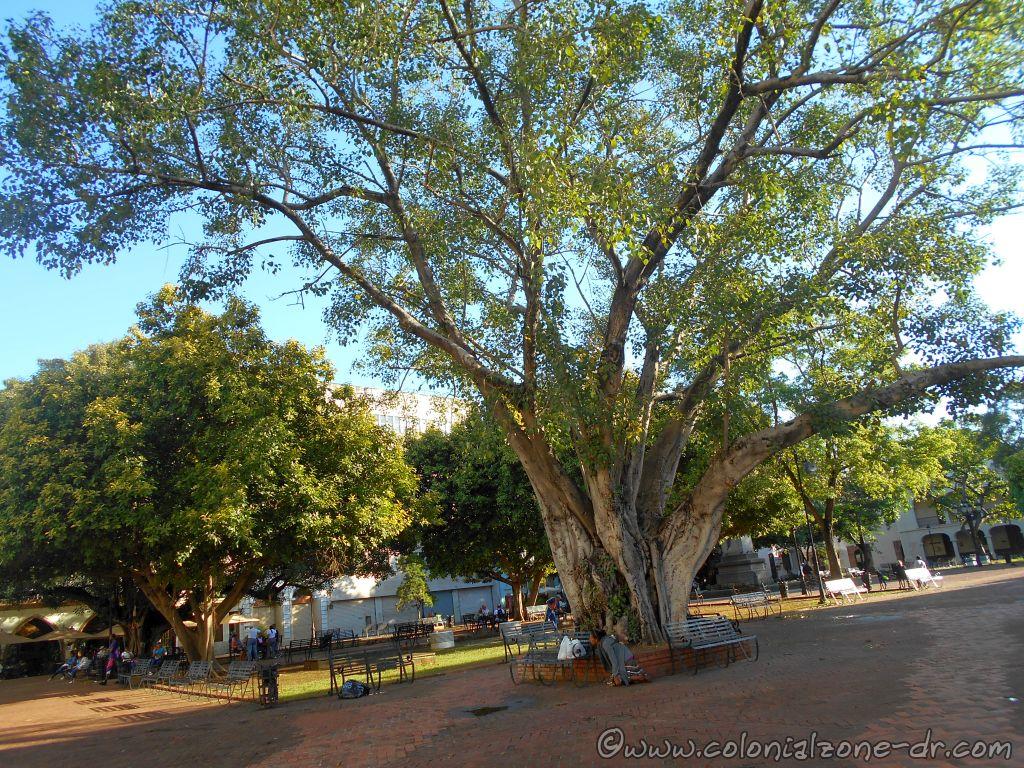
Location:
The park is located directly in front of the Catedral Santa Maria (the oldest cathedral in all Las Americas). On the other side of the park is Calle El Conde and streets Isabel la Católica and Arzobispo Meriño in the center of the old part of the Colonial City.
